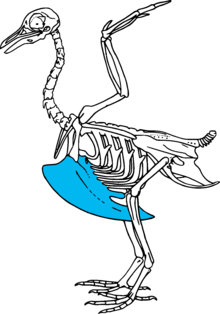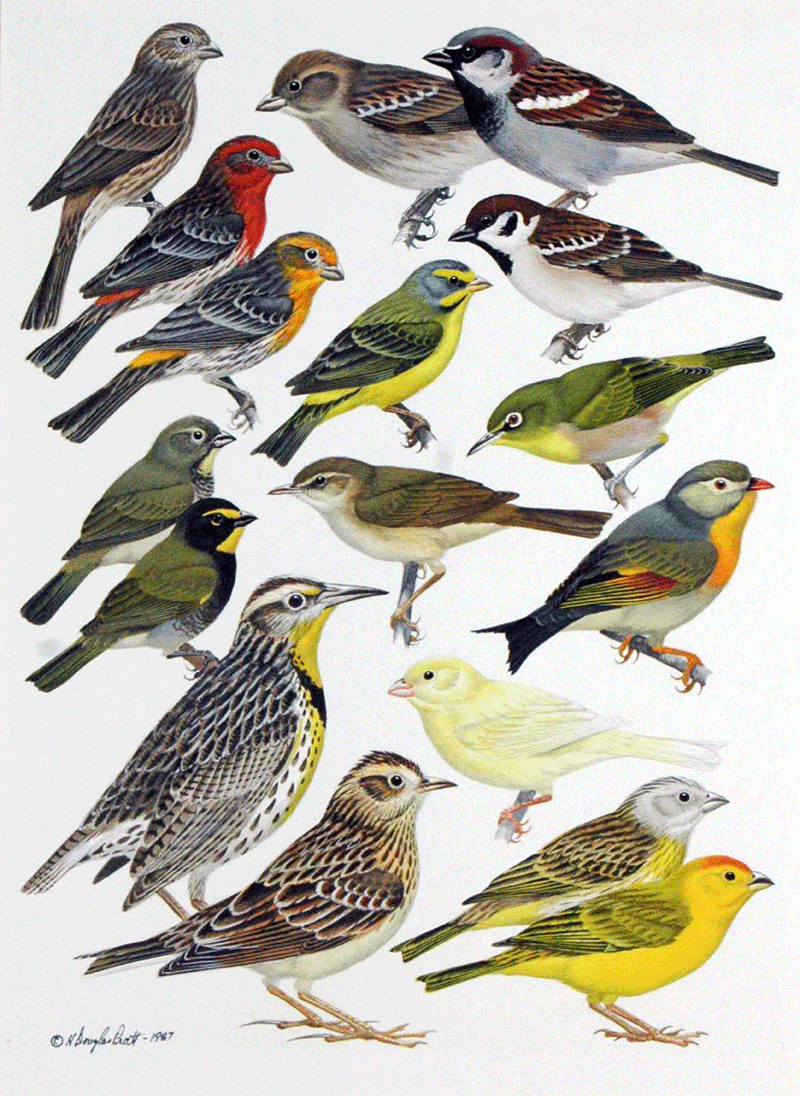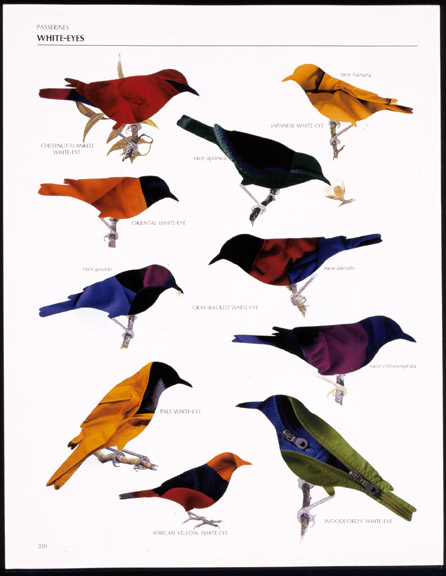-
about
4000 species of modern birds
-
originated
about 150 million years ago from small lizard-like animals called thecodonts
-
characteristics
shared with reptiles: clawed toes, scales on feet, internal fertilization,
amniotic egg
-
Archeopteryx
is the earliest known bird fossil. It
provides a link between modern birds and reptiles, as it has feathers and wings
(like birds) and teeth, long tail with bones and clawed front toes (like
reptiles). The clawed front toes happen
to be on the wing, which is weird, but….
 |
| Archeopteryx (artist's rendition) |
 |
| Archeopteryx fossil |
BODY STRUCTURE
Feathers: unique to birds. They are modified scales (made from keratin) that function to insulate the animal and allows for flight. The word, plumage, refers to all the feathers on a bird’s body. There are different kinds of feathers: down (pehely) for insulation, contour feathers which are found on the body and give the animal’s shape and flight feathers which are found on the wings and designed for flying. The image below shows the general parts of a feather. The rachis of a feather is hollow (to reduce weight) and strong.
Feathers: unique to birds. They are modified scales (made from keratin) that function to insulate the animal and allows for flight. The word, plumage, refers to all the feathers on a bird’s body. There are different kinds of feathers: down (pehely) for insulation, contour feathers which are found on the body and give the animal’s shape and flight feathers which are found on the wings and designed for flying. The image below shows the general parts of a feather. The rachis of a feather is hollow (to reduce weight) and strong.
 |
When birds take care of their feathers they are
preening. They run their beak through their feathers to
spread oil from the preen gland found at the base of their tail. This oil helps to waterproof the feathers. Most birds moult in late summer, usually only loosing a few feathers at a time
so that they can continue to fly (ducks and geese loose most of their flight
feathers at once, so have a period when they can’t fly).
Skeleton:
birds have a thin, hollow, bony skeleton, which helps to reduce their
weight (important for flying). The
largest bone is the sternum (mellcsont), which has a protruding keel (taraj) to
which the bird’s large flight muscles can attach.
 |
Their
hind legs are adapted to their habitat, but they all have 4 toes and scaly
legs. Examples of different ways in
which they use their hind legs include perching (eg. sparrows (veréb)), running
(ostrich), swimming (ducks), walking (pheasants), catching prey (falcons)
 |
 |
Birds are endothermic or homeothermic, so
they maintain a constant body temperature (40-42C) and therefore can live
anywhere
Circulation: 4-chambered heart and
double-circuit circulation
Nutrition: varies greatly. Their beak is usually adapted to the kind of
food they eat. eg. long, dipping beak – hummingbird, strong, hooked beak –
hawk, huge with a pouch – pelican, short and stout for eating nuts and seeds –
goldfinch. They have efficient
digestion, therefore they need to eat a lot and often.
 |
Excretory system excretes uric acid to help
reduce water loss. The cloaca is the opening where the
oviduct opens to release eggs and the
anus opens to release uric acid
Respiration: unique lungs allow for double ventilation. The lungs take up 20% of the bird’s body volume. It is a very efficient system, birds never gasp for air.
 |
Sensory: smell – bad, hearing – good, eyes – very good
Reproduction: internal fertilization follows a period of
complex mating rituals. The female lays
a small number of amniotic eggs with hard calcified shells. The yolks are larger than in reptiles,
allowing for longer development within the egg.
Parents (one or both depending on the species) sit on the eggs to keep
them warm and most birds also practice parental care, feeding the young and
teaching them to fly. Some species are altricial, which means the young are
born helpless, usually without feathers (common in songbirds), while other
species are precocial, which means
the young are born well-developed and do not need a long period of parental
care (eg. chicken chicks).
CLASSIFICATION
27 orders, (200
permanent species in Hungary and 150 migratory), some examples:
Falconiformes
(solyomalkatúak) – eagles, hawks, vultures and falcons
-
304
species
-
daytime
predators
-
called
“birds of prey” or raptors
-
good
at soaring, drab plumage (for blending in), forward-facing eyes, hooked beak
(for tearing apart prey), powerful talons (feet)


Passerines (énekesmadarak) – swallow (fecske), sparrow (veréb), wrens (ökörszem), lark (pacsirta), robin (vörösbegy)


Passerines (énekesmadarak) – swallow (fecske), sparrow (veréb), wrens (ökörszem), lark (pacsirta), robin (vörösbegy)
-
contains
more than half of all bird species, about 5400 species
-
diverse
forms, colours and behaviours
-
perching
foot: 3 toes forward, 1 backward, sharp curved claws
-
most
lay coloured eggs
-
typically
smaller than other birds


Galliformes (tyukalakúak) – chicken, turkey, pheasants, quails


Galliformes (tyukalakúak) – chicken, turkey, pheasants, quails
-
also
called fowl
-
about
290 species
-
large
range in size
-
fast,
but short flight; short, rounded wings
-
primarily
herbivores, but also eat worms and insects


No comments:
Post a Comment